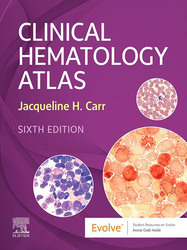「重要なお知らせ:日本語書籍をご購入いただき、eLibraryをご利用の皆さまへ」
エルゼビアは、より快適にサービスをご利用いただくため、システムの重要なアップデートを実施いたします。
現在、新サイト、eBooks+への移行が進められています。
新規ユーザー登録および書籍の登録はElsevier eLibraryでは停止しております。
12月15日以降に
こちらよりご利用・ご登録ください。
Book Description
Learn how to accurately identify cells at the microscope with Clinical Hematology Atlas, 6th Edition. An excellent companion to Rodak's Hematology: Clinical Principles and Applications, this award-winning atlas offers complete coverage of the basics of hematologic morphology, including examination of the peripheral blood smear, maturation of the blood cell lines, and information on a variety of clinical disorders. Vivid photomicrographs, schematic diagrams, and electron micrographs clearly illustrate hematology from normal cell maturation to the development of various pathologies so you can be certain you’re making accurate conclusions in the lab.
- Schematic diagrams, photomicrographs, and electron micrographs in every chapter visually enhance student understanding of hematologic cellular morphology.
- Compact size, concise text, and spiral binding make it easy to carry and reference this atlas in the laboratory.
- Chapter on normal newborn peripheral blood morphology covers the normal cells found in neonatal blood.
- Chapter on body fluids illustrates the other fluids found in the body besides blood, using images from cytocentrifuged specimens.
- The most common cytochemical stains, along with a summary chart for interpretation, are featured in the leukemia chapters to assist in the classification of both malignant and benign leukoproliferative disorders.
- Chapter featuring morphologic changes after myeloid hematopoietic growth factors is included in the text.
- Morphologic abnormalities coverage in the chapters on erythrocytes and leukocytes, along descriptions of each cell, presents this information in a schematic fashion.
- Appendix with comparison tables of commonly confused cells includes lymphocytes versus neutrophilic myelocytes and monocytes versus reactive lymphoctyes to help students see the subtle differences between them.
- Glossary of hematologic terms at the end of the book provides a quick reference to easily look up definitions.
- NEW! Revised chapters include updates based on extensive reviewer feedback.
- NEW! Updated photos reflect the most up-to-date information and latest advances in the field.


 (0 rating)
(0 rating) 





